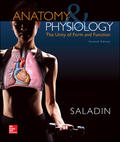
Introduction:
The thyroid gland consists of two lobes, and it is the largest (25 g) adult endocrine gland. The isthmus connects the two lobes of the thyroid gland. The thyroid is located at the neck, adjacent to the trachea and beneath the larynx. It has a butterfly shape and is covered around the trachea. It is composed of thyroid follicles, which is covered by follicular cells. The follicular cells secrete thyroid hormones (TH) such as triiodothyronine (T3) and thyroxine (T4). The thyroid gland releases TH into the bloodstream. Thyroid-stimulating hormone (TSH) regulates hormones (T3 and T4) secretion from the thyroid. TH raises the metabolic rate by promoting the adequate supply of blood and oxygen. Also TH increases the heart rate and respiratory rate and IS involved in the breakdown of carbohydrate and fat to provide energy. TH regulates appetite, alertness, secretion of growth hormone, body growth, reproduction, and circulatory system. Abnormal secretion of thyroid hormones may cause thyroid problems.
Want to see the full answer?
Check out a sample textbook solution
Chapter 17 Solutions
EBK ANATOMY & PHYSIOLOGY: THE UNITY OF
- A physician sees a patient whose symptoms include sluggishness, depression, and intolerance to cold. After eliminating other possible causes, the doctor diagnoses a hormone problem. What disorder fits the symptoms? Why does the doctor suspect that the underlying cause is a malfunction of the anterior pituitary gland?arrow_forwardWhich of the following hormones has theleast in common with the others?a. adrenocorticotropic hormoneb. follicle-stimulating hormonec. thyrotropind. thyroxinee. prolactinarrow_forwardWhich of the following hormones is/are affected when the walls of the aorta and carotid arteries are stretched? a. epinephrine b. parathyroid hormone c. renin d. thyroid hormonearrow_forward
- COLUMN A Hormone COLUMN B Tissue (numbers 61-70) COLUMN C Organ (numbers 71-80) 70. Cortisol A. Alpha cells A. Thyroid 71. Growth hormone B. Zona fasciculata B. Hypophysis 72. Glucagon C. Chief cells C. Neurophysis 73. Luteinizing hormone D. Basophilic cells D. Parathyroids 74. PTH E. Beta cells E. Pancreas 75. TSH AB. Zona glomerulosa AB. Adrenal gland 76. Aldosterone AC. Acidophilic cells 77. Insulin AD. Zona reticularis 78. Prolactin 79. ACTH AE. Oxyphil cellsarrow_forwardWhich of the following is NOT a major function of hormones? Select one: A. Regulation of metabolism B. Control of blood glucose C. Stimulation of growth D. Regulation of water balance E. Synthesis of white blood cells Oarrow_forward1. Follicle-Stimulating Hormone (FSH) 2. Luteinizing Hormone (LH) 3. Arenocorticotropic Hormone (ACTH) 4. Thyroid Stimulating Hormone (TSH) 5. Prolactin (PRL) 6. Growth Hormone (GH) A. Follicle-Stimulating Hormone (FSH) B. Luteinizing Hormone (LH) kisspeptin Hypothalamus Anterior Pituitary Gland FSH = CAMP LH = CAMP Testes Males: protein integrates nutrient, endocrine & environmental signals to release GnRH in 60-90 min intervals Luteinizing Hormone LH 1. LH stimulates secretion of Gonadotropin Releasing Hormone GNRH testosterone Follicle Stimulating Hormone FSH 1.FSH stimulates Sperm production 2.FSH stimulates secretion of inhibits the release of FSH inhibin 3.FSH stimulates release of androgen binding protein (ABP) which binds to testosterone to enhance spermatogenesis) hormone that in fetus TESTOSTERONE then stimulates: 1. Dev of External genitalia At puberty: 2. Sexual drive = libido 3. Sexual behaviors Secondary sexual characteristics (ex: hair 4. Dev and maintenance of male…arrow_forward
- These cells have been taken from which of the following regions of the pituitary gland (hypohypophysis) ? a. adenohypophysis b. neurohypophysisarrow_forwardWhich of the following correctly describes the functions of the endocrine system? a. Transport of blood through the body and through the lungs b. Regulation of body functions through hormone secretion c. Regulation of body functions through nerve impulses d. Immunity and returning extra tissue fluid to the blood vesselsarrow_forwardParathyroid hormone functions in all of the following ways EXCEPT? A. Increasing the rate of calcium absorption B. Decreasing the rate of calcium excretion C. Stimulating osteoclast activity D. Osteoblasts actively generate more bone tissuesarrow_forward
- which of the following increasesin the absence of dietary iodine? ( select all that apply) A.thyrotropin releasing hormone B. adrenocorticotropic hormone c.thyroxine D. thyroid stimulating hormonearrow_forwardWhich of the following hormones would bind a receptor on the exterior surface of its target cell? A. calcitriol B. tri-iodothyronine C. aldosterone D. glucagonarrow_forwardGrowth hormone therapy has been widely used to help people with dwarfism and has helped certain individuals to become taller. Which hormone would supplement or enhance the effects of hGH? Select one: a. calcitonin b. cortisol c. inhibin d. parathyroidarrow_forward
 Medical Terminology for Health Professions, Spira...Health & NutritionISBN:9781305634350Author:Ann Ehrlich, Carol L. Schroeder, Laura Ehrlich, Katrina A. SchroederPublisher:Cengage LearningEssentials of Pharmacology for Health ProfessionsNursingISBN:9781305441620Author:WOODROWPublisher:Cengage
Medical Terminology for Health Professions, Spira...Health & NutritionISBN:9781305634350Author:Ann Ehrlich, Carol L. Schroeder, Laura Ehrlich, Katrina A. SchroederPublisher:Cengage LearningEssentials of Pharmacology for Health ProfessionsNursingISBN:9781305441620Author:WOODROWPublisher:Cengage Human Biology (MindTap Course List)BiologyISBN:9781305112100Author:Cecie Starr, Beverly McMillanPublisher:Cengage Learning
Human Biology (MindTap Course List)BiologyISBN:9781305112100Author:Cecie Starr, Beverly McMillanPublisher:Cengage Learning




